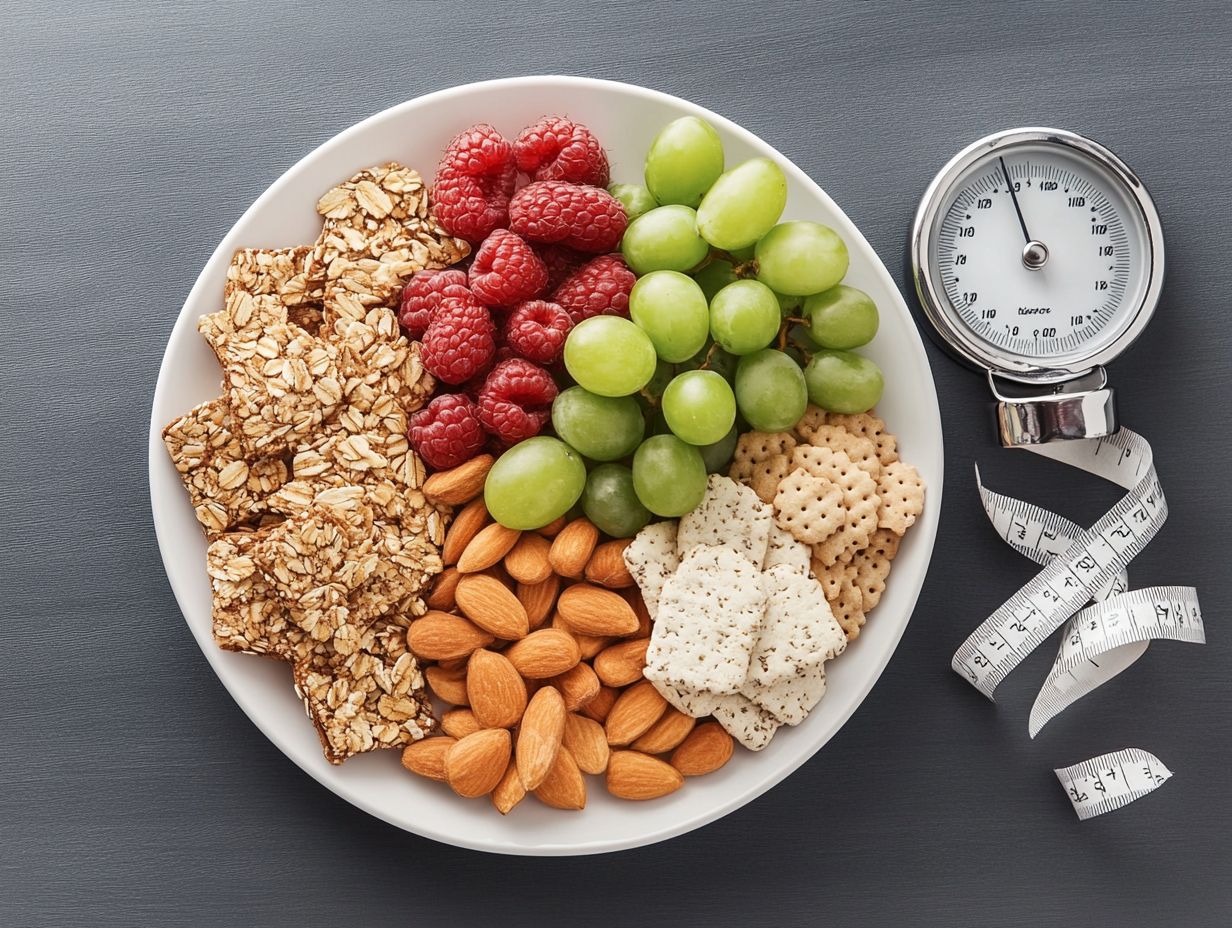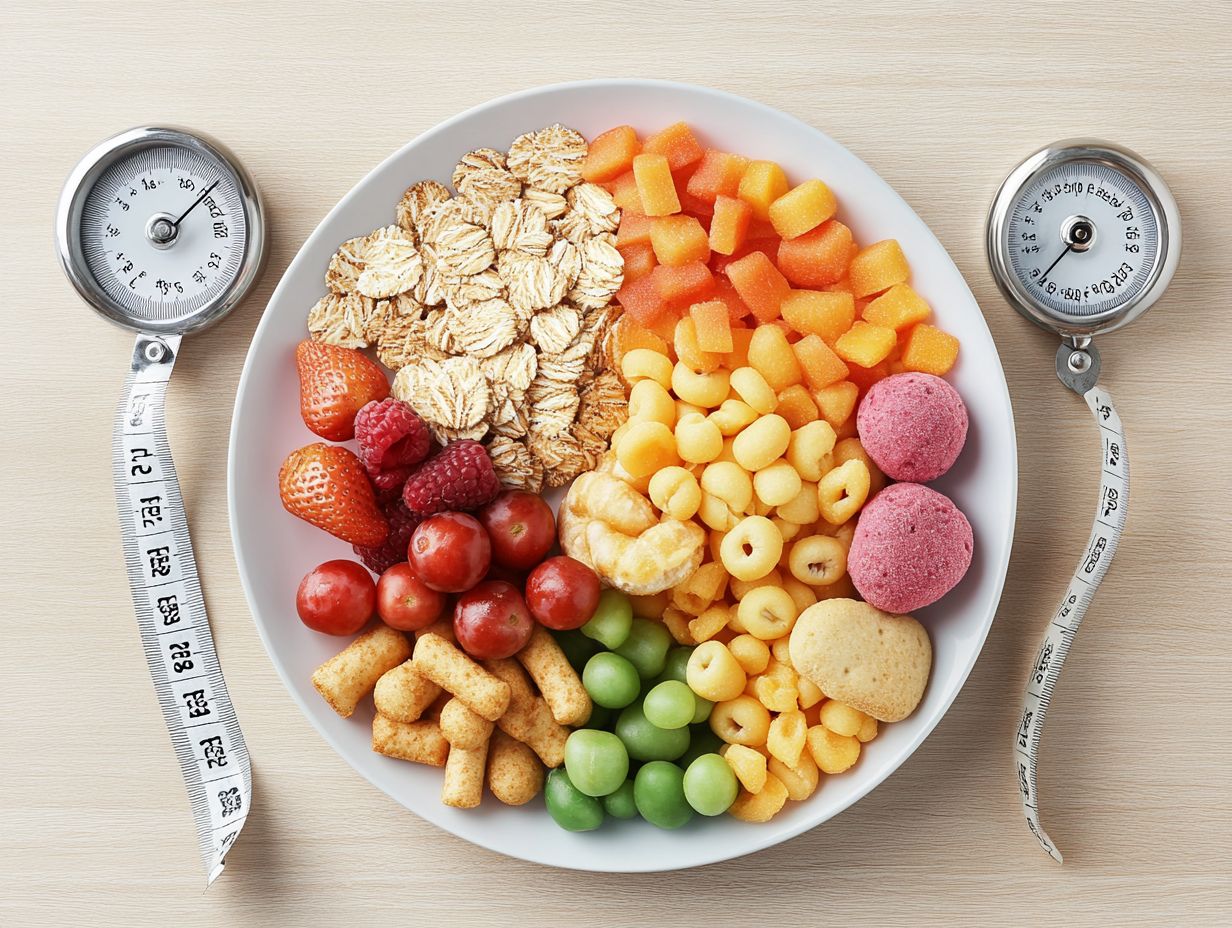Understanding the Glycemic Index and Its Importance
The Glycemic Index (GI) is not just another term in health and nutrition. It plays a vital role in how your body processes food and regulates blood sugar levels.
This article defines the Glycemic Index and highlights its importance in your overall health. You ll learn how to incorporate GI values into your diet effectively.
Discover the factors that influence GI, the benefits of a low-GI diet, and potential drawbacks to consider. Understanding GI can transform your approach to health.
Contents
- Key Takeaways:
- What is the Glycemic Index?
- Why is the Glycemic Index Important?
- How to Use the Glycemic Index
- Factors that Affect the Glycemic Index
- Benefits of Following a Low Glycemic Index Diet
- Potential Drawbacks of the Glycemic Index
- Frequently Asked Questions
- What is the glycemic index and why is it important?
- How is the glycemic index calculated?
- What factors can affect the glycemic index of a food?
- What are some examples of low glycemic index foods?
- Can the glycemic index be used as the sole factor in meal planning?
- Is the glycemic index the same as the glycemic load?
Key Takeaways:

- Knowing the Glycemic Index helps you make informed food choices for better blood sugar control.
- Low GI foods positively impact weight management and disease prevention.
- Consider food preparation and combinations alongside GI values for optimal health.
What is the Glycemic Index?
The glycemic index (GI) ranks carbohydrate-based foods from 0 to 100 based on their effect on blood glucose levels. This helps you understand how different foods influence your blood sugar, especially if you manage diabetes.
Low GI foods, like wholegrain cereals and legumes, release glucose gradually. In contrast, high GI foods can cause quick spikes in blood sugar, affecting your health.
Definition and Explanation
The glycemic index categorizes carbohydrate-rich foods as low-GI or high-GI based on their impact on blood sugar after eating. This measure helps those managing diabetes make better dietary choices.
GI is tested by comparing how a specific food affects blood sugar levels against pure glucose. Low GI foods (55 or less) digest slowly, leading to gradual increases in blood sugar, while high-GI foods (70 or more) spike rapidly.
Low-GI foods usually provide steady glucose, improving energy and reducing the risk of insulin resistance. This knowledge helps you create diets that stabilize blood sugar and enhance health.
Why is the Glycemic Index Important?
Understanding the significance of the glycemic index is essential for maintaining healthy blood sugar levels, especially for those with diabetes. GI shows how fast carbohydrates turn into glucose, crucial for managing insulin levels effectively.
Choosing low-GI foods stabilizes blood sugar and reduces the risk of health issues like heart disease. Adopting a low-glycemic diet can lead to healthier choices and improved long-term health.
Impact on Blood Sugar and Health
The glycemic index influences blood sugar levels and overall health. It determines how quickly glucose enters your bloodstream after consuming carbohydrates.
Understanding how different GI foods affect your body is crucial for stable blood sugar, especially for diabetes management. High-GI foods can cause rapid spikes, leading to quick insulin responses and energy fluctuations.
In contrast, low-GI foods release glucose gradually, helping maintain steady energy and mood. Your body uses glucagon to balance insulin, preventing your blood sugar from dropping too low after meals.
How to Use the Glycemic Index

To use the glycemic index (GI) effectively, you need to understand its values. The GI ranks foods based on how they affect blood sugar levels.
Low-GI foods are better for keeping your blood sugar stable. When planning meals, consider both the GI of foods and your overall diet.
Portion sizes matter too. Following a low-GI diet can help in managing diabetes and developing healthier eating habits.
Interpreting GI Values
Understanding glycemic index (GI) values helps you make better dietary choices. It allows you to tell apart low-GI foods, which keep blood sugar steady, from high-GI foods, which can cause spikes.
Low-GI foods are those with a GI value of 55 or less. Examples include most fruits, whole grains, and legumes.
High-GI foods have values over 70 and include sugary snacks, white bread, and some processed cereals. Choosing low-GI options can help you manage cravings and maintain a balanced diet.
Factors that Affect the Glycemic Index
Many factors influence the glycemic index (GI) of foods. These include cooking methods and how foods are combined.
For example, boiling or steaming can lower a food’s GI, while frying may raise it. The type of carbohydrates, whether simple or complex, also plays a role.
Understanding these factors is important for better blood sugar management, especially for those with diabetes.
Food Preparation and Combination
The way you prepare and combine foods impacts their glycemic index (GI). It’s essential to think about how you cook and pair foods.
Steaming, boiling, and roasting can change the starch structure of carbohydrates, affecting how quickly they raise blood sugar. For instance, al dente pasta has a lower GI than overcooked pasta due to its firmer texture.
Combining low-GI foods with those that have a higher GI can enhance flavor and stabilize your glucose levels. A great example is pairing sweet potatoes with grilled chicken.
Including various vegetables, legumes, and lean proteins in your meals helps maintain balanced blood sugar. This ensures your meals are nutritious and satisfying.
Benefits of Following a Low Glycemic Index Diet
A low glycemic index (GI) diet offers many benefits, especially for weight management and diabetes treatment. By choosing low-GI foods, you can better control your blood sugar and feel full longer.
Adding high-fiber foods like whole grains, fruits, and vegetables boosts these benefits. This not only provides essential nutrients but also lowers the risk of chronic diseases.
Switching to this dietary approach supports long-term health and improves your overall quality of life.
Weight Management and Disease Prevention

A low glycemic index (GI) diet can be a game-changer for your weight management and disease prevention efforts, especially if you’re at risk for diabetes or heart disease.
By focusing on foods that lead to a slower, more gradual rise in blood sugar levels, this dietary strategy helps you regulate your appetite with greater ease.
Research shows that low-GI foods can keep your hunger at bay for longer, significantly decreasing the chances of overeating.
When you maintain stable blood sugar levels, you lower your risk of chronic conditions like Type 2 diabetes and cardiovascular diseases.
Numerous studies indicate that adopting a low-GI diet not only enhances your metabolic health but also improves overall weight control. This underscores its vital role in promoting long-term wellness.
Potential Drawbacks of the Glycemic Index
While the glycemic index (GI) is undoubtedly a useful tool for understanding how foods influence your blood sugar levels, it’s crucial to understand its limitations and criticisms.
One significant concern is that the GI overlooks the nutritional quality of foods. Many processed options may boast a low GI but lack vital nutrients, potentially leading to unhealthy eating habits.
Individual responses to food can differ dramatically. Therefore, the GI should not be your only gauge for a healthy diet.
Recognizing these limitations is key to effectively managing diabetes and making informed dietary decisions.
Limitations and Criticisms
Critics of the glycemic index (GI) often point out its limitations, especially concerning processed foods that may not deliver the same health benefits as whole foods.
This oversimplification can create confusion for you as a consumer, leading you to prioritize GI values over the overall nutritional quality of your meals.
For example, a food with a low GI may still lack essential vitamins and minerals, while a high-GI option could be packed with nutrients.
These misinterpretations highlight the necessity for a more comprehensive dietary approach one that considers glycemic impact alongside important factors like fiber content, micronutrients, and total caloric intake.
By embracing this holistic perspective, you can make more informed choices to enhance your health, moving beyond merely focusing on the numbers associated with the glycemic index.
Frequently Asked Questions
What is the glycemic index and why is it important?
The glycemic index (GI) is a scale that ranks carbohydrates based on how quickly they raise blood sugar levels. It is important because it helps manage blood sugar levels, which is crucial for individuals with diabetes or those looking to maintain a healthy weight.
How is the glycemic index calculated?

The glycemic index is calculated by comparing the rise in blood sugar levels after consuming a specific amount of a carbohydrate-containing food to the rise in blood sugar levels after consuming the same amount of pure glucose.
What factors can affect the glycemic index of a food?
The glycemic index of a food can be affected by multiple factors, including cooking method, ripeness of the food, amount of processing, and the presence of other macronutrients such as fat and fiber.
What are some examples of low glycemic index foods?
Examples of low glycemic index foods include whole grains, legumes, non-starchy vegetables, nuts, and most fruits. These foods have a GI score of 55 or less.
Can the glycemic index be used as the sole factor in meal planning?
No, the glycemic index should be used in conjunction with other nutritional factors such as portion size, overall nutrient content, and individual health goals. It is important to have a balanced and varied diet.
Is the glycemic index the same as the glycemic load?
No, the glycemic index and glycemic load are related but not the same. The glycemic load takes into account both the glycemic index and the serving size of a food, providing a more accurate measure of how a food will affect blood sugar levels.
Explore more tips on managing your diet effectively!






